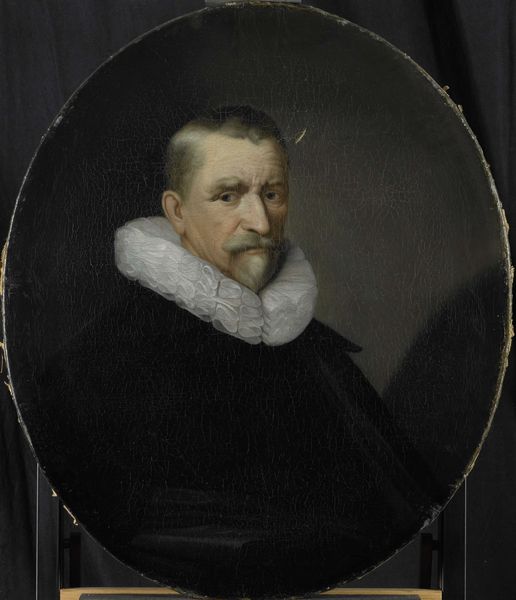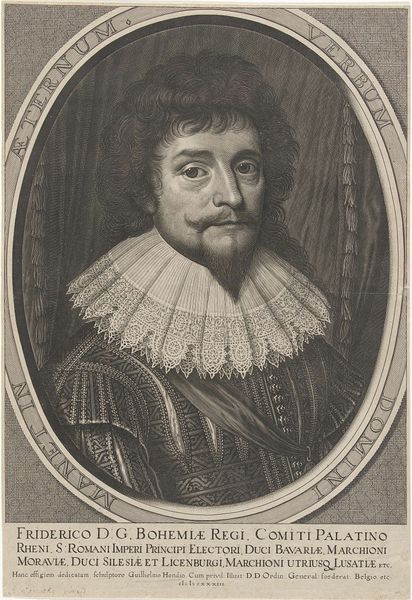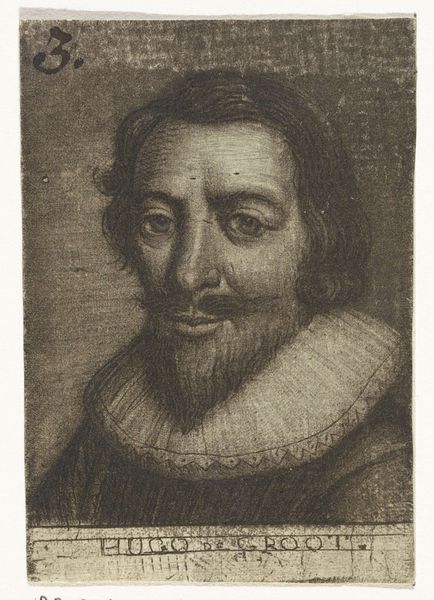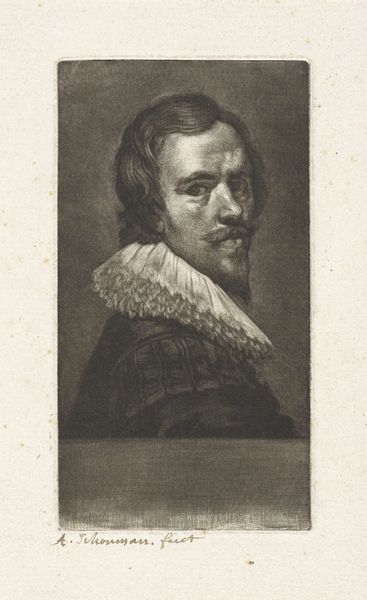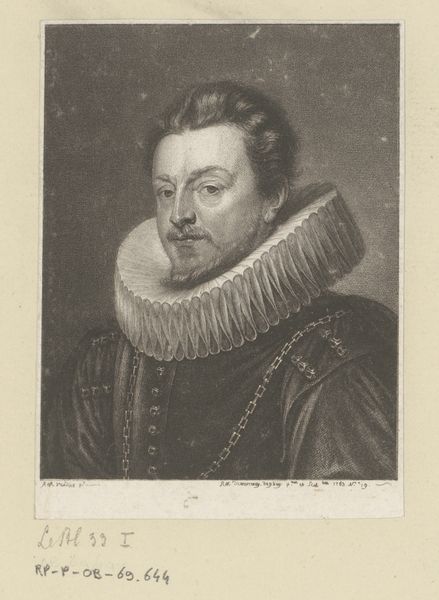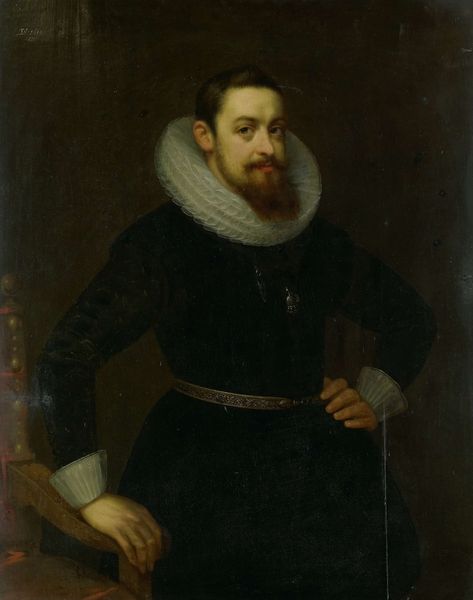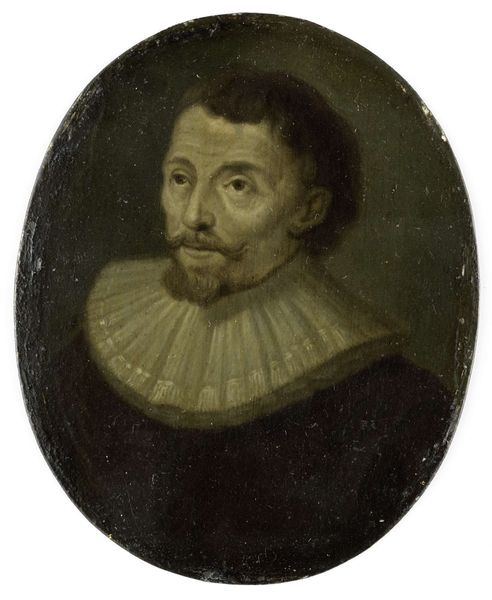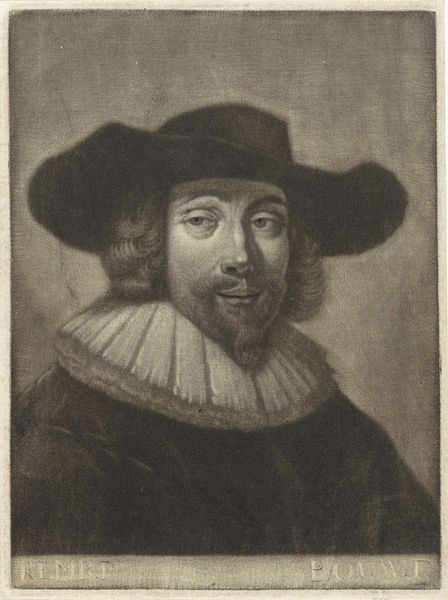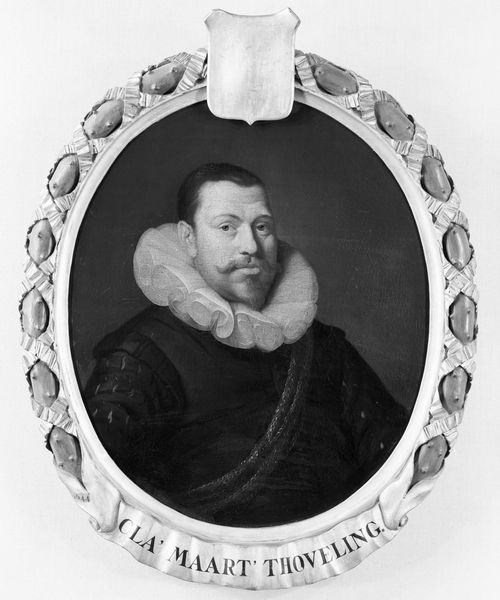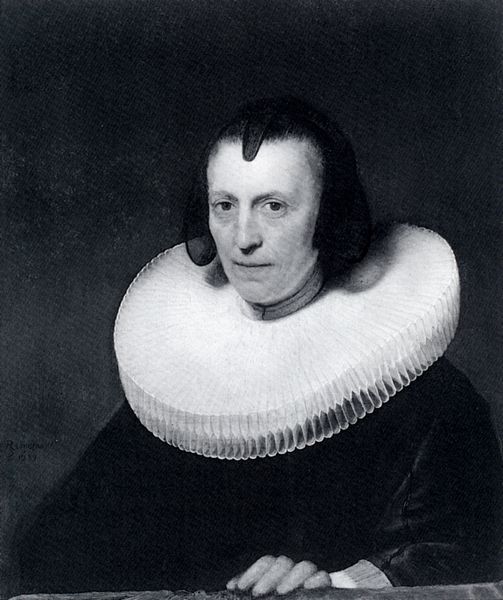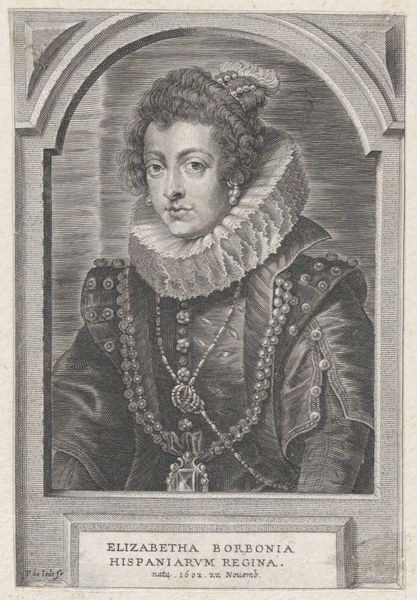
painting, oil-paint, canvas
#
portrait
#
portrait
#
painting
#
oil-paint
#
11_renaissance
#
canvas
#
realism
Dimensions: 55.7 cm (height) x 49.6 cm (width) (Netto)
Curator: We're looking at a 19th-century oil on canvas painting from the Statens Museum for Kunst entitled, simply, "Portrait of a Man," attributed to Janszon. What strikes you first about it? Editor: It's quite somber, isn't it? All deep shadows. My immediate reaction is curiosity about the sitter’s social standing implied through material signifiers like that elaborate ruff. So much meticulous fabric work... and starch! Who made the fabric? Who starched it? Those untold labor stories fascinate me. Curator: Absolutely, the ruff speaks volumes. In portraiture, clothing signifies status. Beyond the man's status, the ruff becomes a symbolic halo, visually framing the head as the center of intellect and importance in a new, early-modern way. Editor: And yet, practically speaking, that ruff seems so... uncomfortable. It restricts movement, emphasizing formality and control. Were sitters active participants in their costuming and portrayal, or were they, in a sense, also raw materials being molded for a specific purpose by artisans of clothing and paint? Curator: Perhaps both. The sitter is not anonymous to us. It's compelling to observe how Janszon captures the very essence of the subject’s interiority: a pensive, intellectual demeanor shines through. It creates a psychological depth, mirroring perhaps some sense of inner turmoil or world-weariness that transcends social status or fleeting fashion. Editor: It’s curious too, that while seemingly created from thin layers of pigment and oil on canvas, we perceive it in black and white today, rendering it more severe in appearance to contemporary eyes. We miss out on a lot of color. The impact, both aesthetic and material, becomes totally altered by the constraints of time and decay of media. Curator: Precisely! Its monochrome quality imbues it with an air of timeless contemplation, inviting us to ponder the enduring nature of identity itself across changing social constructs and generations. Editor: The portrait stands now not just as an artwork but also as a record of materiality, and how production shaped perceptions both in its own time and for those of us looking at it today. Curator: Indeed. A fascinating intersection of representation, skill, and time's own alchemy.
Comments
No comments
Be the first to comment and join the conversation on the ultimate creative platform.
